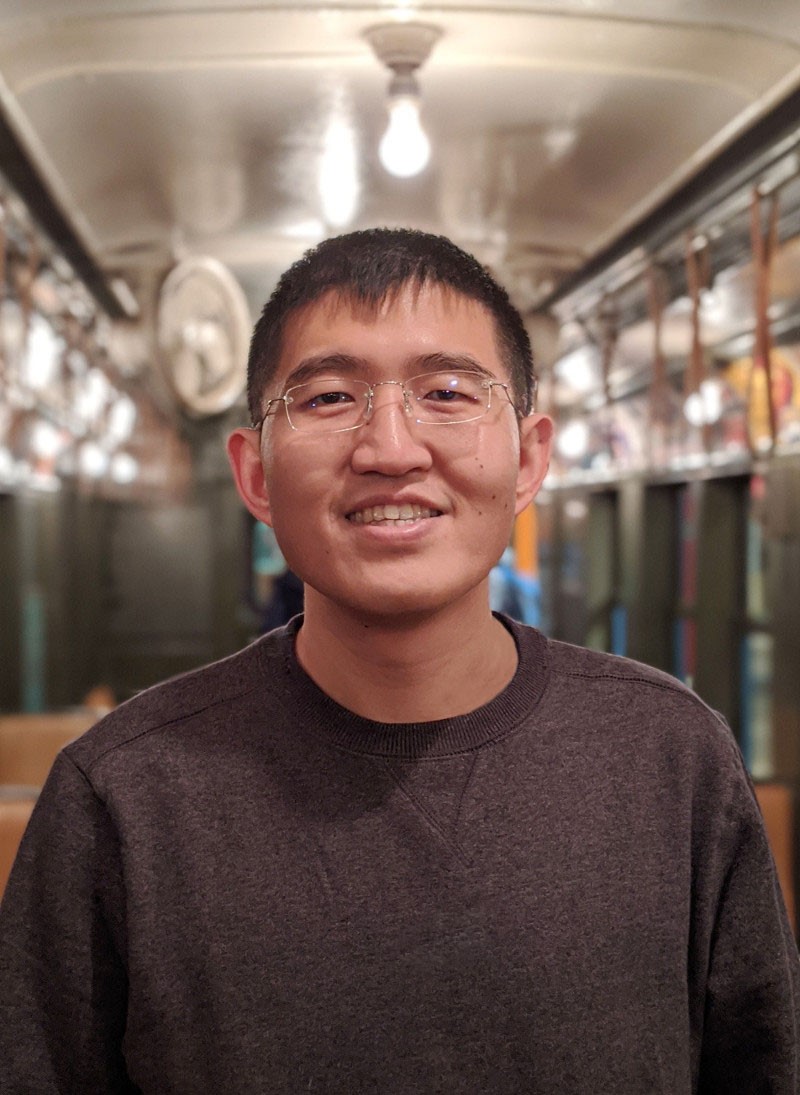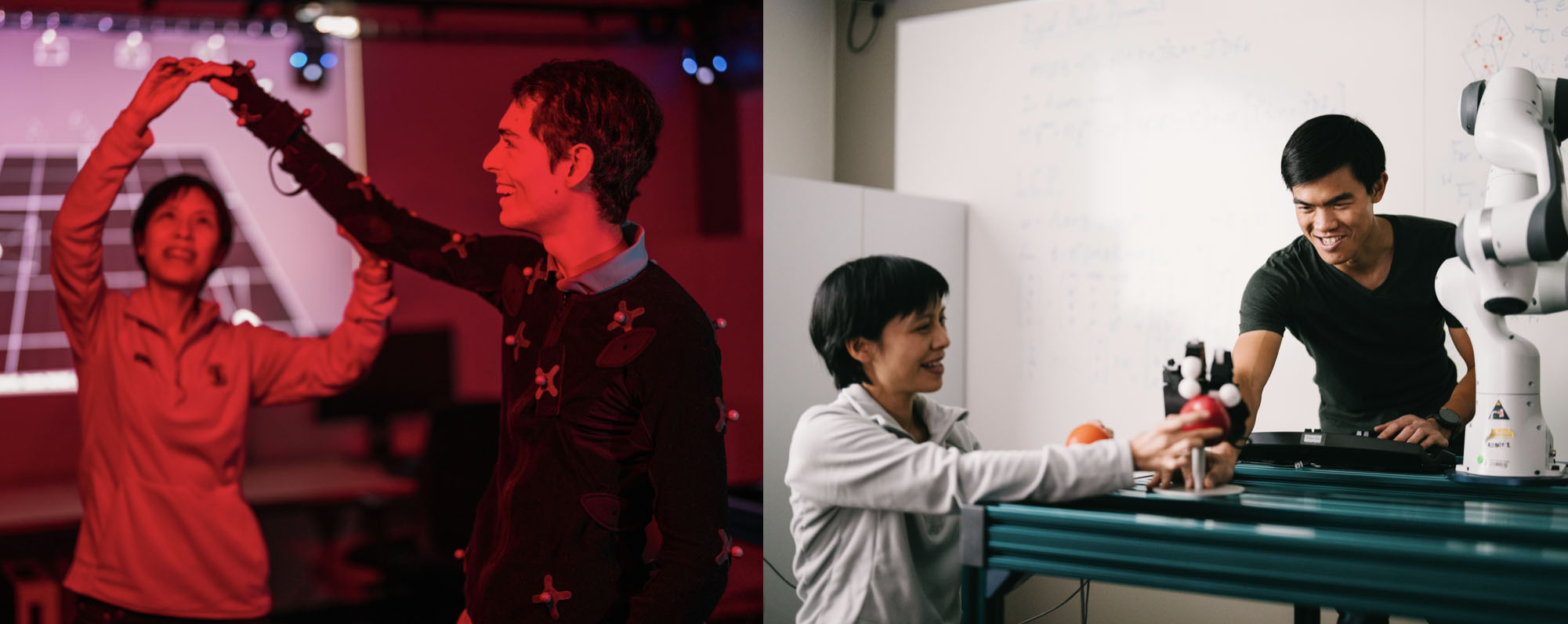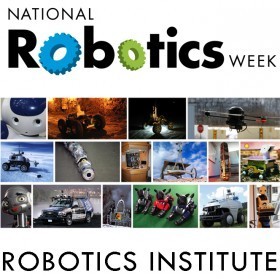Efficient Sensor Coverage in Complex Environments
Abstract: This thesis develops sensor coverage algorithms for mobile robots that are scalable to large and complex environments. The core challenge is computing the shortest paths that can direct one or more robots to sweep onboard sensors over all accessible surfaces within an environment. This problem resembles the watchman route problem that is known to [...]
Reconstructing 3D Humans from Visual Data
Abstract: Abstract: Understanding humans in visual content is fundamental for numerous computer vision applications. Extensive research has been conducted in the field of human pose estimation (HPE) to accurately locate joints and construct body representations from images and videos. Expanding on HPE, human mesh recovery (HMR) addresses the more complex task of estimating the 3D pose [...]
Improving Kalman Filter-based Multi-Object Tracking in Occlusion and Non-linear Motion
Abstract: Modern methods solve multi-object tracking from two perspectives: motion modeling and appearance matching. As a classic paradigm, motion-based tracking by Kalman filters suffers from complicated motion patterns and the problem becomes more difficult when we only have noisy bounding boxes. To improve Kalman filter-based multi-object tracking in scenarios with complex motion, occlusion, and crossover, [...]
Improving Kalman Filter-based Multi-Object Tracking in Occlusion and Non-linear Motion
Abstract: Modern methods solve multi-object tracking from two perspectives: motion modeling and appearance matching. As a classic paradigm, motion-based tracking by Kalman filters suffers from complicated motion patterns and the problem becomes more difficult when we only have noisy bounding boxes. To improve Kalman filter-based multi-object tracking in scenarios with complex motion, occlusion, and crossover, [...]
Design Iteration of Dexterous Compliant Robotic Manipulators
Abstract: The goal of personal robotics is to have robots in homes performing everyday tasks efficiently to improve our quality of life. Towards this end, manipulators are needed which are low cost, safe around humans, and approach human-level dexterity. However, existing off-the-shelf manipulators are expensive both in cost and manufacturing time, difficult to repair, and [...]
Continual Learning of Compositional Skills for Robust Robot Manipulation
Abstract: Real world robots need to continuously learn new manipulation tasks in a lifelong learning manner. These new tasks often share many sub-structures e.g. sub-tasks, controllers, preconditions, with previously learned tasks. To utilize these shared sub-structures, we explore a compositional and object-centric approach to learn manipulation tasks. The first part of this thesis focuses on [...]
Towards Energy-Efficient Techniques and Applications for Universal AI Implementation
Abstract: The rapid advancement of large-scale language and vision models has significantly propelled the AI domain. We now see AI enriching everyday life in numerous ways – from community and shared virtual reality experiences to autonomous vehicles, healthcare innovations, and accessibility technologies, among others. Central to these developments is the real-time implementation of high-quality deep [...]
RI Faculty Business Meeting
Meeting for RI Faculty. Discussions include various department topics, policies, and procedures. Generally meets weekly.
Watch, Practice, Improve: Towards In-the-wild Manipulation
Abstract: The longstanding dream of many roboticists is to see robots perform diverse tasks in diverse environments. To build such a robot that can operate anywhere, many methods train on robotic interaction data. While these approaches have led to significant advances, they rely on heavily engineered setups or high amounts of supervision, neither of which [...]
Structure-from-Motion Meets Self-supervised Learning
Abstract: How to teach machine to perceive 3D world from unlabeled videos? We will present new solution via incorporating Structure-from-Motion (SfM) into self-supervised model learning. Given RGB inputs, deep models learn to regress depth and correspondence. With the two inputs, we introduce a camera localization algorithm that searches for certified global optimal poses. However, the [...]
Combining Physics-Based Light Transport and Neural Fields for Robust Inverse Rendering
Abstract: Inverse rendering — the process of recovering shape, material, and/or lighting of an object or environment from a set of images — is essential for applications in robotics and elsewhere, from AR/VR to perception on self-driving vehicles. While it is possible to perform inverse rendering from color images alone, it is often far easier [...]
Improving the Transparency of Agent Decision Making to Humans Using Demonstrations
Abstract: For intelligent agents (e.g. robots) to be seamlessly integrated into human society, humans must be able to understand their decision making. For example, the decision making of autonomous cars must be clear to the engineers certifying their safety, passengers riding them, and nearby drivers negotiating the road simultaneously. As an agent's decision making depends [...]
Robotic Climbing for Extreme Terrain Exploration
Abstract: Climbing robots can operate in steep and unstructured environments that are inaccessible to other ground robots, with applications ranging from the inspection of artificial structures on Earth to the exploration of natural terrain features throughout the solar system. Climbing robots for planetary exploration face many challenges to deployment, including mass restrictions, irregular surface features, [...]
Layout Design for Large-Scale Multi-Robot Coordination
Abstract: Today, thousands of robots are navigating autonomously in warehouses, transporting goods from one location to another. While numerous planning algorithms are developed to coordinate robots more efficiently and robustly, warehouse layouts remain largely unchanged – they still adhere to the traditional pattern designed for human workers rather than robots. In this talk, I will [...]
Perception amidst interaction: spatial AI with vision and touch for robot manipulation
Abstract: Robots currently lack the cognition to replicate even a fraction of the tasks humans do, a trend summarized by Moravec's Paradox. Humans effortlessly combine their senses for everyday interactions—we can rummage through our pockets in search of our keys, and deftly insert them to unlock our front door. Before robots can demonstrate such dexterity, [...]
Toward Human-Centered XR: Bridging Cognition and Computation
Abstract: Virtual and Augmented Reality enables unprecedented possibilities for displaying virtual content, sensing physical surroundings, and tracking human behaviors with high fidelity. However, we still haven't created "superhumans" who can outperform what we are in physical reality, nor a "perfect" XR system that delivers infinite battery life or realistic sensation. In this talk, I will discuss some of our [...]
Carnegie Mellon Graphics Colloquium: C. Karen Liu : Building Large Models for Human Motion
Building Large Models for Human Motion Large generative models for human motion, analogous to ChatGPT for text, will enable human motion synthesis and prediction for a wide range of applications such as character animation, humanoid robots, AR/VR motion tracking, and healthcare. This model would generate diverse, realistic human motions and behaviors, including kinematics and dynamics, [...]
Teaching a Robot to Perform Surgery: From 3D Image Understanding to Deformable Manipulation
Abstract: Robot manipulation of rigid household objects and environments has made massive strides in the past few years due to the achievements in computer vision and reinforcement learning communities. One area that has taken off at a slower pace is in manipulating deformable objects. For example, surgical robotics are used today via teleoperation from a [...]
Zeros for Data Science
Abstract: The world around us is neither totally regular nor completely random. Our and robots’ reliance on spatiotemporal patterns in daily life cannot be over-stressed, given the fact that most of us can function (perceive, recognize, navigate) effectively in chaotic and previously unseen physical, social and digital worlds. Data science has been promoted and practiced [...]
RI Faculty Business Meeting
Meeting for RI Faculty. Discussions include various department topics, policies, and procedures. Generally meets weekly.
Emotion perception: progress, challenges, and use cases
Abstract: One of the challenges Human-Centric AI systems face is understanding human behavior and emotions considering the context in which they take place. For example, current computer vision approaches for recognizing human emotions usually focus on facial movements and often ignore the context in which the facial movements take place. In this presentation, I will [...]
[MSR Thesis Talk] SplaTAM: Splat, Track & Map 3D Gaussians for Dense RGB-D SLAM
Abstract: Dense simultaneous localization and mapping (SLAM) is crucial for numerous robotic and augmented reality applications. However, current methods are often hampered by the non-volumetric or implicit way they represent a scene. This talk introduces SplaTAM, an approach that leverages explicit volumetric representations, i.e., 3D Gaussians, to enable high-fidelity reconstruction from a single unposed RGB-D [...]
Language: You’ve probably heard of it, read it, written it, gestured it, mimed it… Why can’t robots?
Abstract: Language is how meaning is conveyed between humans, and now the basis of foundation models. By implication, it's the most important modality for all of AGI and will replace the entire robotics control stack as the most important thing for all of us to work on.
RI Faculty Business Meeting
Meeting for RI Faculty. Discussions include various department topics, policies, and procedures. Generally meets weekly.
Foundation Models for Robotic Manipulation: Opportunities and Challenges
Abstract: Foundation models, such as GPT-4 Vision, have marked significant achievements in the fields of natural language and vision, demonstrating exceptional abilities to adapt to new tasks and scenarios. However, physical interaction—such as cooking, cleaning, or caregiving—remains a frontier where foundation models and robotic systems have yet to achieve the desired level of adaptability and [...]





















